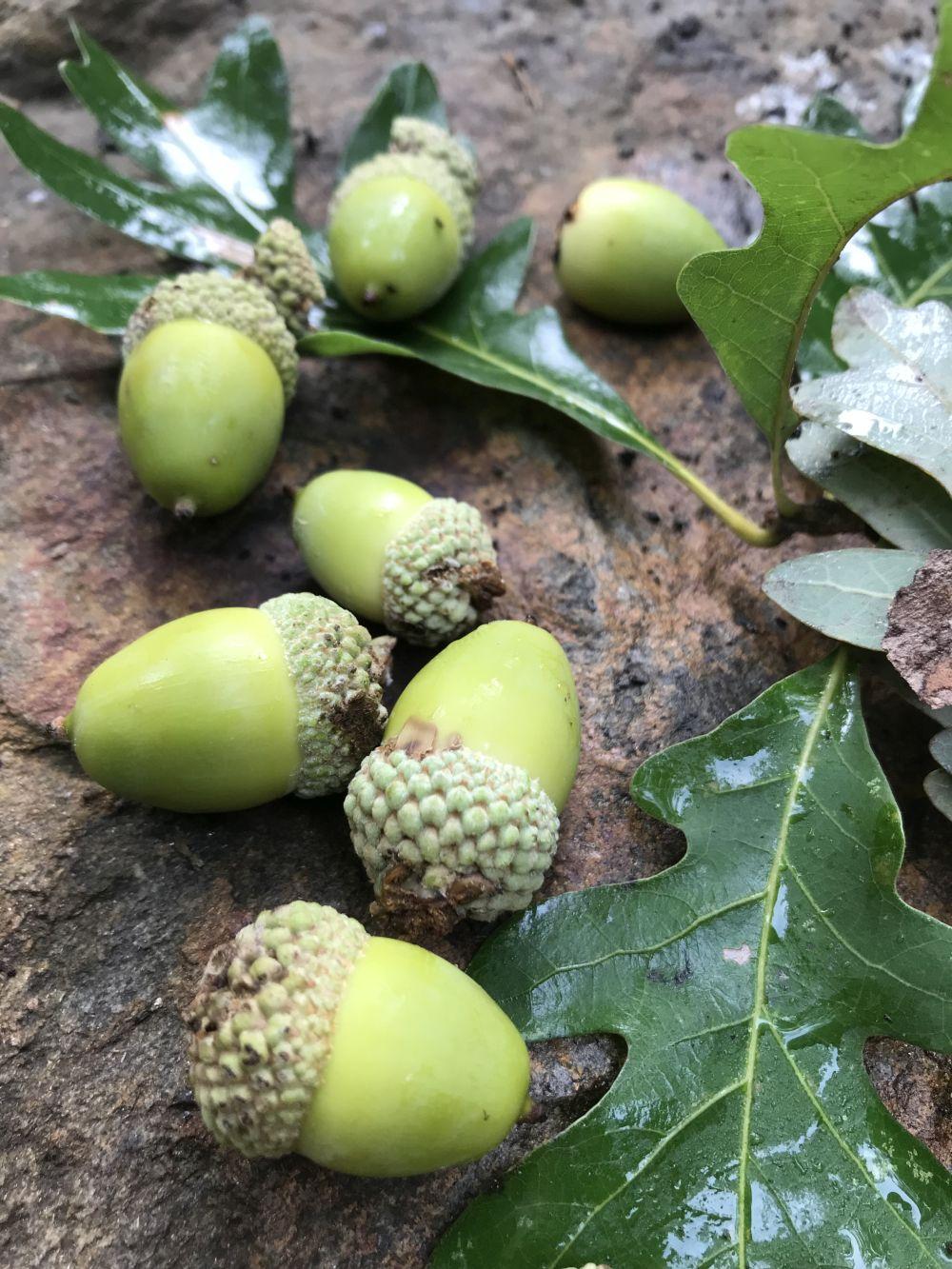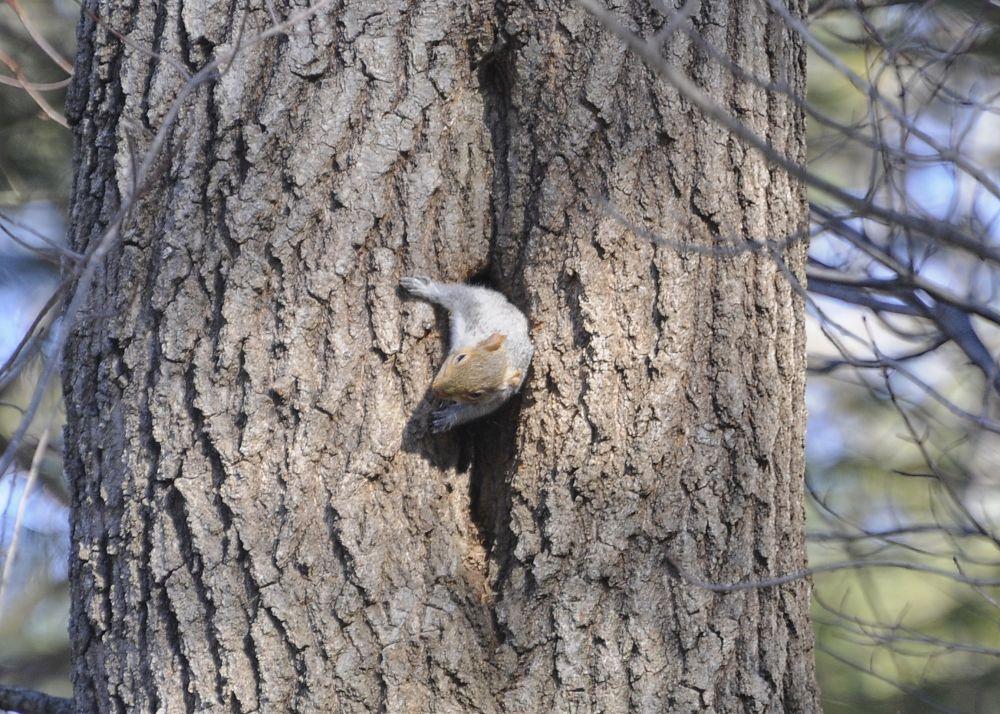The phenomenon of "masting"
- Tags:
- Wildlife,
- Something Wild

White oak acorns and leaves. White oak acorns arrive early but don't last long as they are preferred by wildlife and quickly consumed.
"Something Wild" is joint production of NH Audubon, The Society for the Protection of New Hampshire Forests & NHPR.
We recommend listening to it in its original format but a transcript of the show is also below.
You can hear Something Wild on-air at NHPR every other Friday at 6:45 a.m. and 8:45 a.m., or subscribe to the Apple podcast here.
----------------
The number of acorns a tree produces in a given year has to do with masting. Not mast like on tall ships, but mast as in masticate, or to chew and it refers to the fruit, seeds or nuts that trees produce and are in turn fodder for animals. Especially in New Hampshire, oak mast follows a boom or bust cycle, which means the amount of acorns varies from year to year. Over time, evolution has favored the oak trees that demonstrate this boom or bust cycle.

This keeps seed consumers off balance and that's actually a good thing. If there were the same amount of acorns every year, there would be just enough squirrels and mice and turkeys and deer to consume every single acorn. However, by producing very few acorns for a couple of years running, they starve-off the animals and the populations of seed predators crash. Then, the oak has a boom year and there aren't enough seed-eating animals to eat them all. This allows at least some acorns to sprout and become trees.
Which means the oaks are calling the shots in the forest.
It goes even further than that.
In response to boom years of acorn crops, the numbers of seed predators increases, so the following year there are more mice and squirrels and voles. This in turn leads to an increase in raptors that feed on those small animals.
These boom and bust cycles affect humans too. One of the top acorn consumers is the white footed mouse. When there's a boom year and these little mice increase in number, the tick population that feeds on those mice goes up as well. More ticks means more ticks carrying lyme disease, which means an increase in lyme disease in humans. All this from the humble acorn.

And from your questions! Keep those questions coming and we'll do our best to feature the answers in a future episode of Something Wild. You can send your questions to: somethingwild@nhpr.org. We'd also love to see your photos too, flora, fauna, anything in nature that catches your eye.
